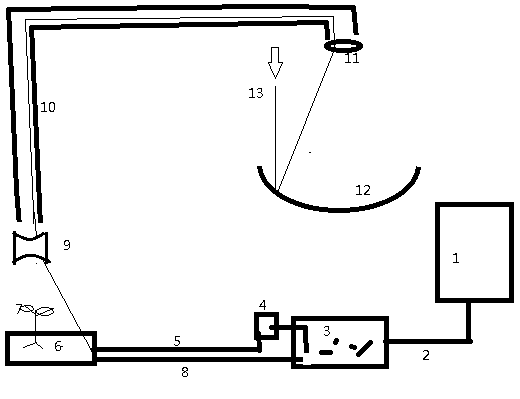Energy-saving environment-friendly vegetable planting method
A planting method, vegetable technology, applied in the field of optics and cultivation, can solve the problems of land whitening, poisoning, occupying space, etc.
- Summary
- Abstract
- Description
- Claims
- Application Information
AI Technical Summary
Problems solved by technology
Method used
Image
Examples
Embodiment Construction
[0006] The present invention is actually composed of two parts. The first part is to guide the sunlight to the vegetables. The specific process is that when the sun shines on the concave mirror, the light is focused by the reflection of the concave mirror, and the light becomes parallel through the convex lens. Line, but the area is greatly reduced, the intensity is greatly increased, and then transmitted to the optical fiber, the optical fiber leads the light to the vegetable planting field, and the light beam from the optical fiber passes through the concave lens to expand the projected area of the light, and the sunlight is irradiated on the vegetables. It can also be focused by a convex lens, and then turned into parallel lines by a concave lens, but the area is greatly reduced and the intensity is greatly increased, and then projected onto the optical fiber, which leads the light to the vegetable planting field, and the light beam from the optical fiber passes through the...
PUM
 Login to View More
Login to View More Abstract
Description
Claims
Application Information
 Login to View More
Login to View More - R&D
- Intellectual Property
- Life Sciences
- Materials
- Tech Scout
- Unparalleled Data Quality
- Higher Quality Content
- 60% Fewer Hallucinations
Browse by: Latest US Patents, China's latest patents, Technical Efficacy Thesaurus, Application Domain, Technology Topic, Popular Technical Reports.
© 2025 PatSnap. All rights reserved.Legal|Privacy policy|Modern Slavery Act Transparency Statement|Sitemap|About US| Contact US: help@patsnap.com

